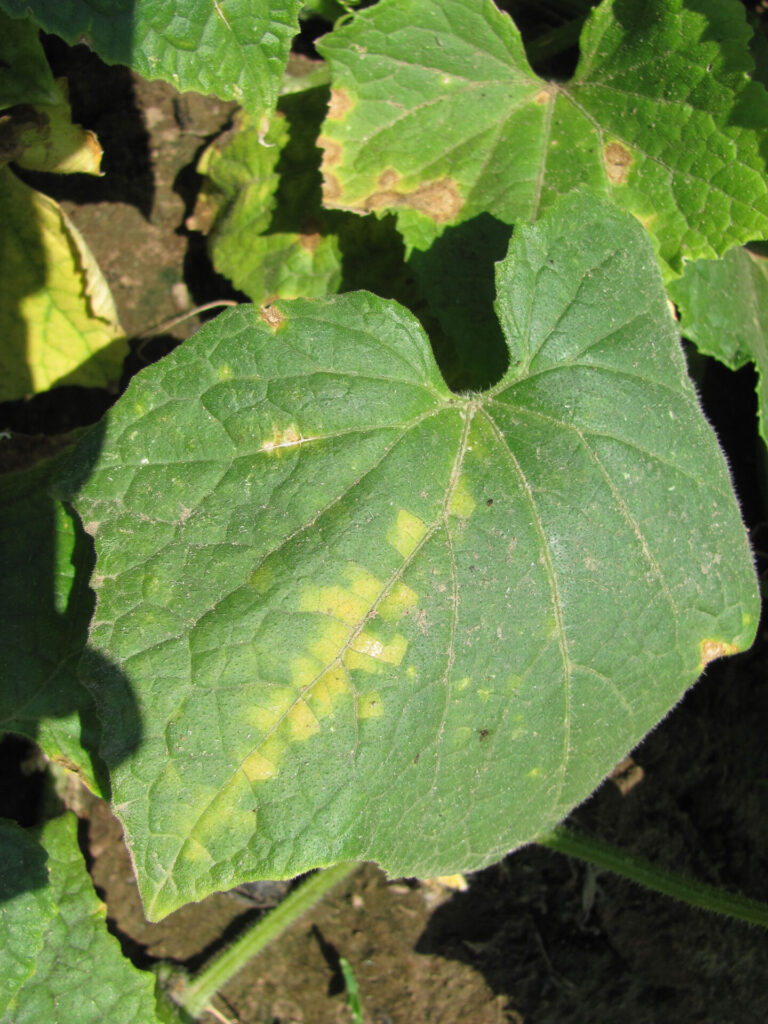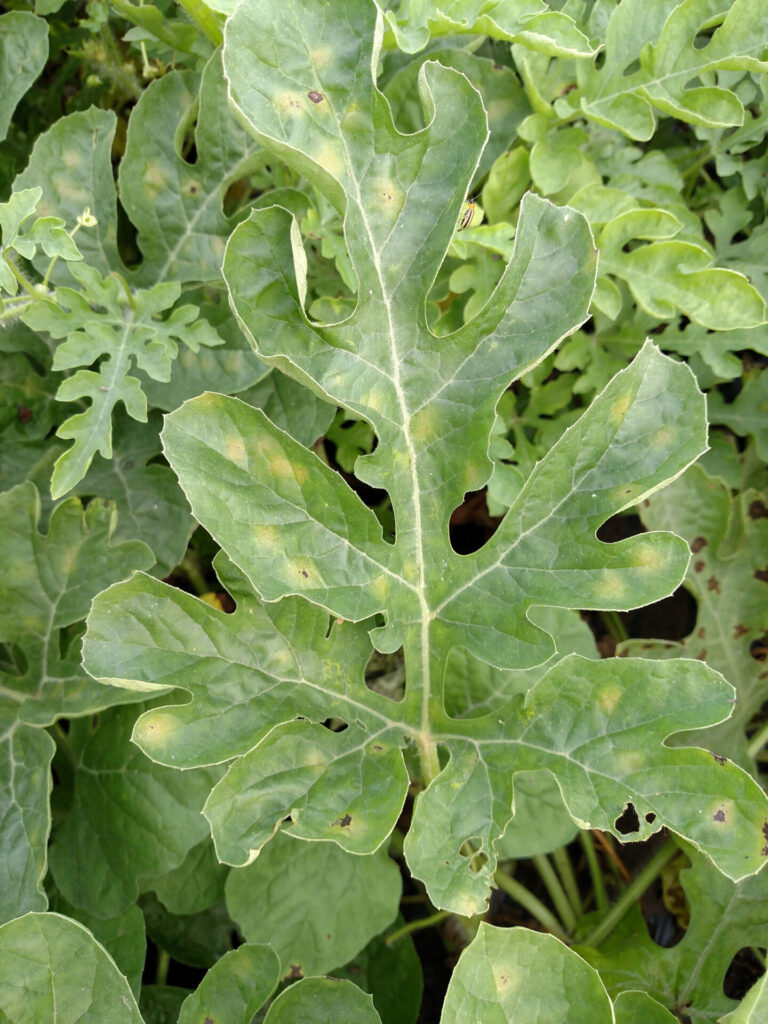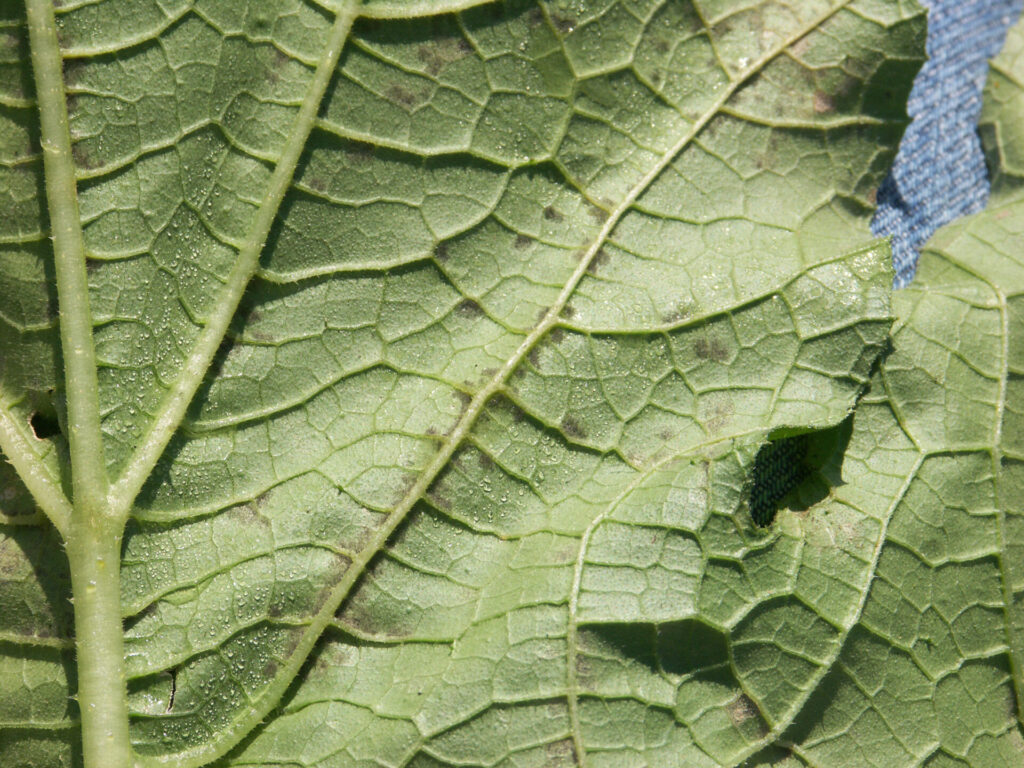Last week, cucurbit downy mildew (Pseudoperonospora cubensis) was reported on cucumber in southwest Kentucky and northern Ohio. Last month, the disease was also reported in cucumber crops in Michigan. Being that close to Indiana, it is a good time to stay alert and scout fields for symptoms related to this disease. Remember, early detection of this pathogen is key to implementing appropriate management strategies. This disease can be severe on cucurbit crops, to the point where leaves are lost, thereby reducing yield and product quality.
The causal agent of this disease does not overwinter in areas such as Indiana because it requires a living host to survive the winter. Therefore, the pathogen reaches Indiana primarily through wind dispersal from cucurbit crops in the South. Some cucurbit crops are also grown in greenhouses in the northern U.S. and Canada and serve as sources of inoculum. For this reason, downy mildew may or may not show up in Indiana; regardless, we should remain alert. An excellent resource for monitoring this disease is the Cucurbit Downy Mildew Forecasting page, accessible through the following link: https://cdm.ipmpipe.org/.
What should you be looking for in the field?
First, I should mention that downy mildew affects all cucurbit crops, and symptoms differ slightly from crop to crop. While angular, prominent yellow lesions can be observed on pumpkin and cucumber (Figure 1), the symptoms on watermelon and melon are more diffuse (light yellow) and irregular in shape (Figure 2). Under wet conditions, gray sporulation of the pathogen can be observed on the underside of the leaves (Figure 3); this is easier to see using a magnifying glass. Severe infections can lead to necrotic lesions and collapsed plants.

Figure 1. Downy mildew of cucumber. Note angular chlorotic/yellow lesions Photo by Dan Egel, https://ag.purdue.edu/department/arge/swpap/downy-mildew-cucumber.html).

Figure 2. Light yellow and necrotic lesions of downy mildew on a watermelon leaf (Photo by Dan Egel, https://ag.purdue.edu/department/arge/swpap/downy-mildew-watermelon.html).

Figure 3. Downy mildew of pumpkin. Sporulation is visible on the underside of the leaf near the vein where moisture has accumulated (Photo by Dan Egel, https://ag.purdue.edu/department/arge/swpap/downy-mildew-pumpkin.html).
Disease management practices
Crop rotation is not an effective practice for managing this disease, for the reason mentioned earlier; the pathogen arrives from other areas “to visit us.” However, keep in mind that crop rotation is still important for managing other cucurbit diseases. Apply contact fungicides as soon as the disease is detected. Some examples of contact fungicides include chlorothalonil products (Bravo®, Echo®, Equus®, Initiate®) and mancozeb (Dithane®, Manzate®, Penncozeb®). Systemic products are also effective in managing this disease. Some systemic fungicides you can use include Elumin®, Gavel 75DF®, Orondis Opti®, Orondis Ultra®, Ranman 400SC®, and Zampro®. A detailed list of fungicide products, including those mentioned here and copper-based products, is available in the Midwest Vegetable Production Guide.
Additional resources:
Egel, D. 2018. Vegetable diseases: downy mildew of cucurbits. Purdue Extension. BP-140-W. https://edustore.purdue.edu/bp-140-w.html
Midwest Vegetable Production Guide. 2025. https://mwveguide.org/guide
Gauthier, N. 2025. Cucurbit downy mildew confirmed in Kentucky. University of Kentucky.